John Bird BSc (Hons) CEng CMath CSci FIET MIEE FIIE FIMA FCollT9780750657846, 0-7506-5784-7
Table of contents :
Part 1 Basic Electrical Engineering Principles……Page 17
1 SI units……Page 18
1 Force……Page 19
1 Power……Page 20
1 Resistance and conductance……Page 21
1 Electrical power and energy……Page 22
1 Summary of terms, units and their symbols……Page 23
1 Further problems on units associated with basic electrical quantities……Page 24
2 Standard symbols for electrical components……Page 25
2 Electric current and quantity of electricity……Page 26
2 Linear and non- linear devices……Page 28
Standard electrical quantities — their symbols and units 4……Page 0
2 Multiples and sub- multiples……Page 29
2 Electrical power and energy……Page 31
2 Fuses……Page 35
3 Resistance and resistivity……Page 38
3 Temperature coefficient of resistance……Page 41
3 Further problems on resistance variation……Page 44
4 Electrolysis……Page 46
4 The simple cell……Page 47
4 Corrosion……Page 48
4 E.m.f. and internal resistance of a cell……Page 49
4 Primary cells……Page 51
4 Secondary cells……Page 52
4 Further problems on the chemical effects of electricity……Page 54
Assignment 1……Page 56
5 Series circuits……Page 57
5 Potential divider……Page 59
5 Parallel networks……Page 60
5 Current division……Page 63
5 Wiring lamps in series and in parallel……Page 67
5 Further problems on series and parallel networks……Page 68
6 Electrostatic field……Page 70
6 Capacitors……Page 72
6 Permittivity……Page 74
6 The parallel plate capacitor……Page 76
6 Capacitors connected in parallel and series……Page 78
6 Dielectric strength……Page 82
6 Energy stored……Page 83
6 Practical types of capacitor……Page 84
6 Further problems on capacitors and capacitance……Page 85
7 Magnetic fields……Page 89
7 Magnetic flux and flux density……Page 90
7 Magnetomotive force and magnetic field strength……Page 91
7 Reluctance……Page 95
7 Composite series magnetic circuits……Page 96
7 Hysteresis and hysteresis loss……Page 99
7 Further problems on magnetic circuits……Page 100
Assignment 2……Page 102
8 Magnetic field due to an electric current……Page 104
8 Electromagnets……Page 106
8 Force on a current- carrying conductor……Page 107
8 Principle of operation of a simple d. c. motor……Page 111
8 Principle of operation of a moving coil instrument……Page 112
8 Further problems on electromagnetism……Page 113
9 Introduction to electromagnetic induction……Page 115
9 Laws of electromagnetic induction……Page 116
9 Inductance……Page 119
9 Inductors……Page 121
9 Inductance of a coil……Page 122
9 Mutual inductance……Page 123
9 Further problems on electromagnetic induction……Page 124
10 Electrical measuring instruments and measurements……Page 127
10 Moving-iron instrument……Page 128
10 Comparison of moving- coil, moving- iron and moving- coil rectifier instruments……Page 129
10 Shunts and multipliers……Page 130
10 The ohmmeter……Page 132
10 Instrument ‘loading’ effect……Page 133
10 The cathode ray oscilloscope……Page 136
10 Waveform harmonics……Page 139
10 Logarithmic ratios……Page 141
10 Wheatstone bridge……Page 144
10 A.c. bridges……Page 145
10 Measurement errors……Page 146
10 Further problems on electrical measuring instruments and measurements……Page 148
11 Types of materials……Page 152
11 n-type and p-type materials……Page 153
11 The p-n junction……Page 154
11 Semiconductor diodes……Page 155
11 Further problems on semiconductor diodes……Page 158
12 The bipolar junction transistor……Page 160
12 Transistor action……Page 162
12 Transistor connections……Page 164
12 Transistor characteristics……Page 165
12 The transistor as an amplifier……Page 167
12 The load line……Page 169
12 Current and voltage gains……Page 170
12 Thermal runaway……Page 173
12 Further problems on transistors……Page 174
Assignment 3……Page 177
Measurements 1……Page 179
Part 2 Electrical Principles and Technology……Page 180
13 D.c. circuit theory……Page 181
13 The superposition theorem……Page 185
13 General d.c. circuit theory……Page 188
13 Constant-current source……Page 195
13 Thevenin and Norton equivalent networks……Page 198
13 Maximum power transfer theorem……Page 201
13 Further problems on d. c. circuit theory……Page 203
14 The a.c. generator……Page 207
14 Waveforms……Page 208
14 A.c. values……Page 209
14 The equation of a sinusoidal waveform……Page 214
14 Combination of waveforms……Page 218
14 Rectification……Page 222
14 Further problems on alternating voltages and currents……Page 223
Assignment 4……Page 226
15 Purely resistive a.c. circuit……Page 227
15 Purely capacitive a. c. circuit……Page 228
15 Series resonance……Page 239
15 Q-factor……Page 241
15 Bandwidth and selectivity……Page 243
15 Power in a.c. circuits……Page 244
15 Power triangle and power factor……Page 246
15 Further problems on single- phase series a. c. circuits……Page 248
16 Single-phase parallel a. c. circuits……Page 252
16 Parallel resonance and Q- factor……Page 261
16 Power factor improvement……Page 266
16 Further problems on single- phase parallel a. c. circuits……Page 270
17 D.c. transients……Page 273
17 Charging a capacitor……Page 274
17 Discharging a capacitor……Page 280
17 The effects of time constant on a rectangular waveform……Page 289
17 Further problems on d. c. transients……Page 290
18 Introduction to operational amplifiers……Page 292
18 Some op amp parameters……Page 294
18 Op amp inverting amplifier……Page 296
18 Op amp non- inverting amplifier……Page 299
18 Op amp summing amplifier……Page 300
18 Op amp integrator……Page 302
18 Op amp differential amplifier……Page 303
18 Digital to analogue ( D/ A) conversion……Page 305
18 Analogue to digital ( A/ D) conversion……Page 307
18 Further problems on operational amplifiers……Page 308
Assignment 5……Page 310
19 Three-phase supply……Page 311
19 Star connection……Page 312
19 Delta connection……Page 316
19 Power in three- phase systems……Page 317
19 Measurement of power in three- phase systems……Page 320
19 Further problems on three- phase systems……Page 326
20 Transformers……Page 329
20 Transformer principle of operation……Page 330
20 Transformer no- load phasor diagram……Page 333
20 E.m.f. equation of a transformer……Page 334
20 Transformer on- load phasor diagram……Page 338
20 Transformer construction……Page 339
20 Equivalent circuit of a transformer……Page 340
20 Regulation of a transformer……Page 343
20 Transformer losses and efficiency……Page 344
20 Resistance matching……Page 348
20 Auto transformers……Page 351
20 Three-phase transformers……Page 354
20 Current transformers……Page 356
20 Voltage transformers……Page 357
20 Further problems on transformers……Page 358
Assignment 6……Page 363
21 D.c. machines……Page 364
21 The action of a commutator……Page 365
21 D.c. machine construction……Page 366
21 E.m.f. generated in an armature winding……Page 367
21 Types of d.c. generator and their characteristics……Page 370
21 D.c. machine losses……Page 376
21 Efficiency of a d.c. generator……Page 377
21 D.c. motors……Page 378
21 Torque of a d.c. machine……Page 379
21 Types of d.c. motor and their characteristics……Page 382
21 The efficiency of a d. c. motor……Page 387
21 D.c. motor starter……Page 390
21 Speed control of d. c. motors……Page 391
21 Further problems on d. c. machines……Page 395
22 Three-phase induction motors……Page 400
22 Production of a rotating magnetic field……Page 401
22 Synchronous speed……Page 402
22 Principle of operation of a three- phase induction motor……Page 404
22 Slip……Page 405
22 Rotor e.m.f. and frequency……Page 407
22 Rotor impedance and current……Page 408
22 Induction motor losses and efficiency……Page 409
22 Torque equation for an induction motor……Page 411
22 Induction motor torque – speed characteristics……Page 415
22 Starting methods for induction motors……Page 417
22 Advantages of squirrel- cage induction motors……Page 418
22 Uses of three-phase induction motors……Page 419
22 Further problems on three- phase induction motors……Page 420
Assignment 7……Page 422
23 D.c. transients:……Page 423
23 D.c. machines:……Page 424
23 Three-phase induction motors:……Page 425
Part 3 Advanced Circuit Theory and Technology……Page 426
23 Revision of complex numbers……Page 427
23 Operations involving Cartesian complex numbers……Page 429
23 Complex equations……Page 431
23 Multiplication and division using complex numbers in polar form……Page 433
23 Further problems on complex numbers……Page 436
24 Series a.c. circuits……Page 441
24 Further problems on series a. c. circuits……Page 452
25 Admittance, conductance and susceptance……Page 456
25 Parallel a.c. networks……Page 460
25 Further problems on parallel a. c. networks……Page 466
26 Determination of power in a. c. circuits……Page 471
26 Power triangle and power factor……Page 476
26 Use of complex numbers for determination of power……Page 477
26 Power factor improvement……Page 482
26 Further problems on power in a. c. circuits……Page 484
Assignment 8……Page 487
27 Balance conditions for an a. c. bridge……Page 488
27 Types of a.c. bridge circuit……Page 490
27 Further problems on a. c. bridges……Page 500
28 Series resonance……Page 503
28 Q-factor……Page 507
28 Voltage magnification……Page 510
28 Q-factors in series……Page 514
28 Bandwidth……Page 516
28 Small deviations from the resonant frequency……Page 521
28 Further problems on series resonance and Q- factor……Page 524
29 Parallel resonance and Q- factor……Page 527
29 Dynamic resistance……Page 529
29 Q-factor in a parallel network……Page 531
29 Further problems on parallel resonance and Q- factor……Page 539
Assignment 9……Page 542
30 Introduction to network analysis……Page 543
30 Solution of simultaneous equations using determinants……Page 544
31 Mesh-current analysis……Page 557
31 Nodal analysis……Page 562
31 Further problems on mesh- current and nodal analysis……Page 571
32 Using the superposition theorem……Page 574
32 Further problems on the superposition theorem……Page 584
33 Thevenin and Norton equivalent networks……Page 605
Assignment 10……Page 614
34 Delta-star transformation……Page 615
34 Star-delta transformation……Page 623
34 Further problems on delta-star and star-delta transformations……Page 626
35 Maximum power transfer theorems……Page 629
35 Impedance matching……Page 635
35 Further problems on maximum power transfer theorems and impedance matching……Page 638
Assignment 11……Page 641
36 Complex Waveforms……Page 643
36 The general equation for a complex waveform……Page 644
36 Harmonic synthesis……Page 645
36 Rms value, mean value and the form factor of a complex wave……Page 657
36 Power associated with complex waves……Page 662
36 Harmonics in single- phase circuits……Page 665
36 Resonance due to harmonics……Page 676
36 Sources of harmonics……Page 678
36 Further problems on complex waveforms……Page 683
37 Harmonic analysis on data given in tabular or graphical form……Page 690
37 Complex waveform considerations……Page 695
37 Further problems on a numerical method of harmonic analysis……Page 697
38 Revision of terms and units used with magnetic circuits……Page 700
38 Magnetic properties of materials……Page 702
38 Hysteresis and hysteresis loss……Page 704
38 Eddy current loss……Page 708
38 Separation of hysteresis and eddy current losses……Page 713
38 Nonpermanent magnetic materials……Page 716
38 Permanent magnetic materials……Page 718
38 Further problems on magnetic materials……Page 719
Assignment 12……Page 722
39 Polarization……Page 723
39 Dielectric strength……Page 724
39 Mechanical properties……Page 726
39 Dielectric loss and loss angle……Page 727
39 Further problems on dielectric loss and loss angle……Page 731
40 Field plotting by curvilinear squares……Page 732
40 Capacitance between concentric cylinders……Page 737
40 Capacitance of an isolated twin line……Page 745
40 Energy stored in an electric field……Page 749
40 Inductance of a concentric cylinder ( or coaxial cable)……Page 753
40 Inductance of an isolated twin line……Page 758
40 Energy stored in an electromagnetic field……Page 762
40 Further problems on field theory……Page 765
41 Attenuators……Page 770
41 Characteristic impedance……Page 771
41 Logarithmic ratios……Page 773
41 Symmetrical T-and p- attenuators……Page 776
41 Insertion loss……Page 784
41 Asymmetrical Tand p- sections……Page 787
41 The L-section attenuator……Page 791
41 Two-port networks in cascade……Page 794
41 Further problems on attenuators……Page 797
Assignment 13……Page 801
42 Filter networks……Page 802
42 Basic types of filter sections……Page 803
42 The characteristic impedance and the attenuation of filter sections……Page 804
42 Ladder networks……Page 807
42 Low-pass filter sections……Page 809
42 High-pass filter sections……Page 819
42 Propagation coefficient and time delay in filter sections……Page 827
42 ‘m-derived’ filter sections……Page 837
42 Practical composite filters……Page 845
42 Further problems on filter networks……Page 849
43 Self-inductance……Page 853
43 Mutual inductance……Page 854
43 Coupling coefficient……Page 855
43 Coils connected in series……Page 857
43 Coupled circuits……Page 861
43 Dot rule for coupled circuits……Page 869
43 Further problems on magnetically coupled circuits……Page 876
44 Transmission line primary constants……Page 881
44 Phase delay, wavelength and velocity of propagation……Page 883
44 Current and voltage relationships……Page 885
44 Characteristic impedance and propagation coefficient in terms of the primary constants……Page 887
44 Distortion on transmission lines……Page 894
44 Wave reflection and the reflection coefficient……Page 897
44 Standing waves and the standing wave ratio……Page 902
44 Further problems on transmission lines……Page 909
45 Transients and Laplace transforms……Page 913
45 Introduction to Laplace transforms……Page 926
45 Inverse Laplace transforms and the solution of differential equations……Page 933
45 Laplace transform analysis directly from the circuit diagram……Page 942
45 Initial conditions……Page 961
45 Further problems on transients and Laplace transforms……Page 964
Assignment 14……Page 970
Complex numbers: 3……Page 972
Hysteresis and Eddy current: 3……Page 973
Attenuators: 3……Page 974
Magnetically coupled circuits 3……Page 975
Transients: 3……Page 976
Part 4 General Reference……Page 977
Greek alphabet 4……Page 981
Common prefixes 4……Page 982
Colour code for fixed resistors 4……Page 983
Letter and digit code for resistors 4……Page 984
Index……Page 985

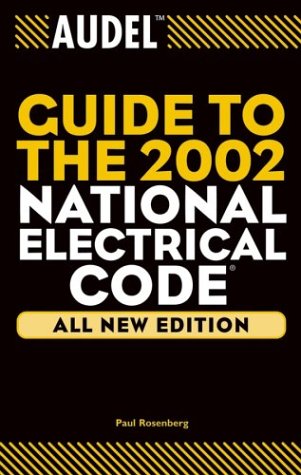
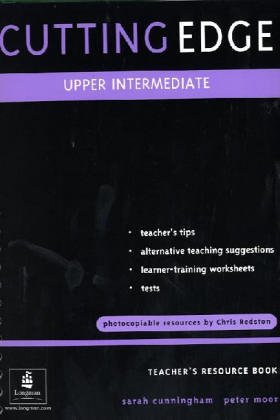
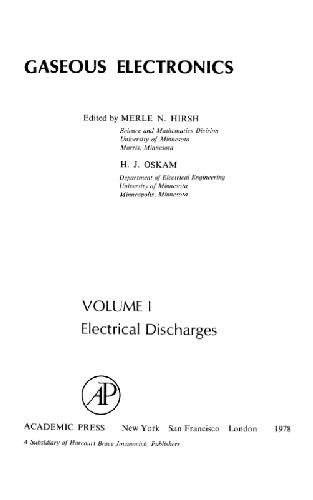
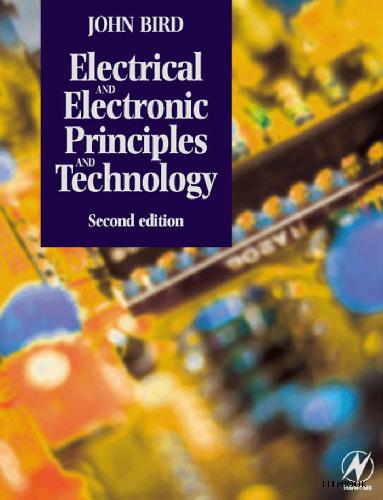
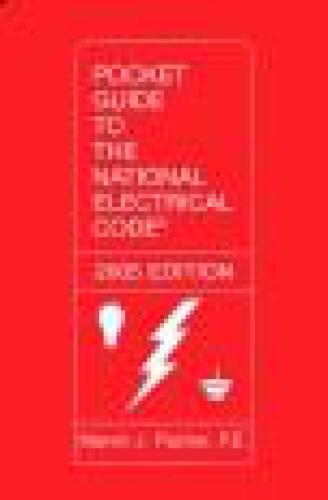
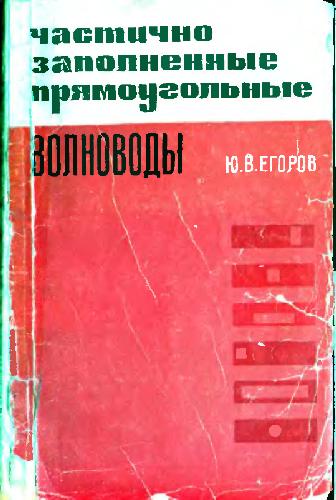
Reviews
There are no reviews yet.